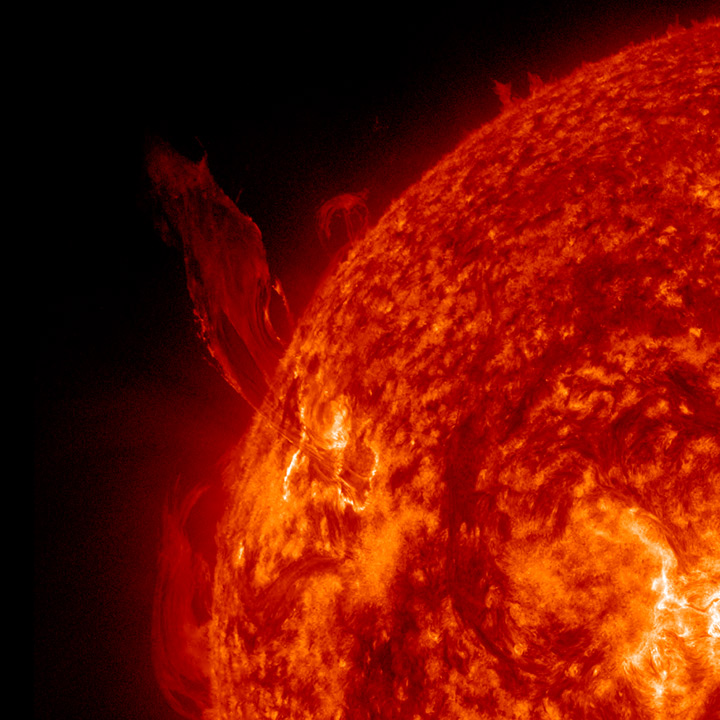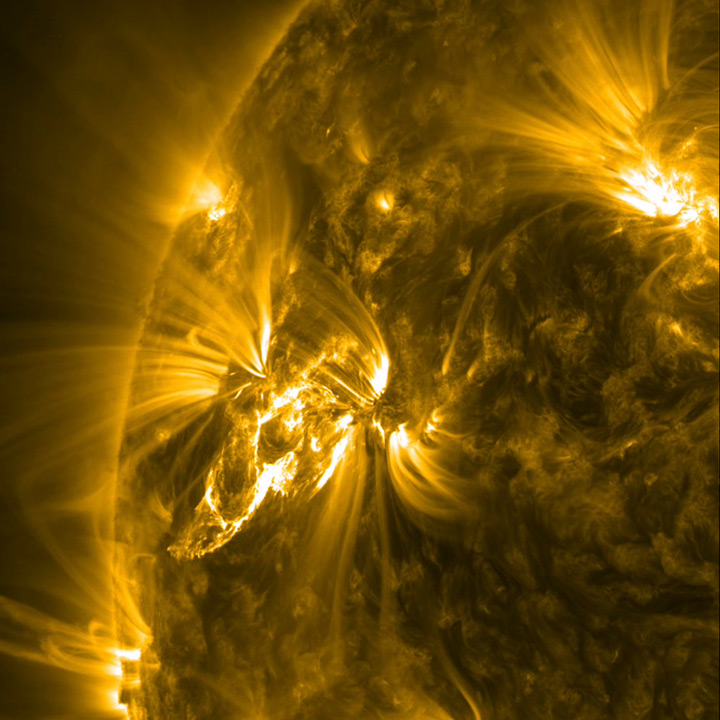
Figure 1 – Photograph of an erupting solar prominence taken of September 24, 2013 by the SDO. From NASA and in the publi domain.
A few days ago I happened upon some of the beautiful images coming from NASA’s “Solar Dynamics Laboratory (SDO).” Two of these are shown in Figures 1 & 2. These particular images were taken with the satellite’s deep ultraviolet camera. I could go on for quite a while explaining why this region of the electromagnetic spectrum was chosen, how these cameras work, and why it’s important. But I choose to focus instead on the simple point that these images are truly spectacular.
There is this fine line between science and art. Here the images were chosen from a great many by a human being as one’s that appeal to a human aesthetic. Similarly the colors chosen for the rendering again appeal to human sensibilities and in no small way to our sense of the mythic. The red-orange images evoke association with the phrase “cauldron of the gods.” Is the Sun’s fire the forge of Hephaestus? As we know, the Sun is not made of fire but of insanely hot plasma, a state of matter where the atoms have been strip by the intense heat of their electrons. But in our artistic mythic enthusiasm we forget the scientific facts and dwell a few moments in the romance of the image.
In such images, I believe we stand at the crossroads between science and art. We see that ultimately there is a piece of both in all human intellectual effort. Photography has always, at it does in the case of the Solar Dynamics Observatory’s images, occupied this liminal zone. In what it reveals it is art. In the chemistry and physics of how it works, and how it is practiced, it is science.
This dichotomy defines the sense of wonder that we have when looking at scientific images like these. They took great science to produce. But someone practiced in art selected then and selected how they would be displayed. Please enjoy these pictures. Visit NASA’s SDO mission website to see more of them and their accompanying videos. At the same time remember what Hamlet said:

Figure 2 – Deep UV image of a sunspot group showing the magnetic field lines and taken by the SOD from Januray 9-15, 2013. From NASA and in the public domain.
